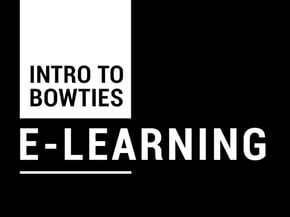In the process safety world, the development of bowties are part of the toolkit we have at our disposal to communicate how risks around a specific scenario can be managed. I have applied some basic bowtie concepts to my sport of ultra-endurance swimming.
I am currently 5 swims into my quest to complete the Oceans 7 challenge, I often get asked about how this pursuit is compatible with my profession in process safety. For those who have not come across the Oceans 7 challenge, it is the swimming equivalent of climbing the 7 highest peaks of the world and includes the English Channel (England-France), The North Channel (Ireland - Scotland), Tsugaru Strait (Japan), Cook Strait (NZ), The Molokai Channel (Hawaii), Catalina Channel (USA) and the, Gibraltar Strait. The rules prohibit the use of wetsuits and resting on your support craft. As of 2024, 33 people on the planet have completed this.
The safety question I often get is a valid enquiry, as it can appear to be a daunting proposition for the uninitiated. The swims take anywhere from 5 to 20 hours and hazards of tides, currents, hypothermia, jellyfish and sea conditions are a real threat that leads to many DNFs (did not finish).
I normally respond to this ”safety” question by saying that “I train for it” and have “experience” but when it comes down to it, you can't fully train for the unexpected. I have been doing ultra-swimming for over 10 years now and try to soak up all the advice I can get, however, it is the “doing” and the failures that teach you the most.

|

|

|
| THIS online INTRODUCTION TO BOWTIES course is suitable for anyone who may use or develop bowties. |
Find out about our upcoming in-person BOWTIE Training Course HERE! |
Our 2-day HAZOP LEADER course is IChemE approved, find out more HERE! |
I have always been intrigued by how I could “couch” this activity in terms of a bowtie to communicate this to my colleagues and clients. A bowtie is a technique we use in the high-hazard industry to communicate the relationship between the outcomes of undesirable events, their causes and the ways that can be prevented. Have a look at this bowtie and let me know what you think.
The items on the left-hand side are called causes, which if left untreated, will lead to an undesirable outcome. The barriers reduce the likelihood of the outcome being realised.

After preparing this bowtie, I can make the following conclusions:
- This bowtie has grown since I first prepared it a few years ago, reflecting the additional experience
- The causes and effectiveness depend on many human factors and conditions out of your control. This is a big difference to process safety scenarios which tend to be more predictable.
- Build your plan around what can go wrong. Communicate this with your team and develop the mitigation plans. You need them to “think” for you when you are in the water and your mental state is failing.
- Train yourself both physically and mentally to deal with the high likelihood that you will move along 2 or 3 of the bowtie threat lines during an event.
This model is by no means complete, but a summary of how I risk manage my events and keep safe.
Ready to take your process safety strategy to the next level?
Visualise threats, controls, and consequences effectively. Contact us today to discuss Bowtie Training for your organisation. Learn how to clearly visualise and communicate risks with our Bowtie eLearning course. This self-paced program teaches you how to build high-quality bowties, identify barriers, and strengthen organisational risk management, all from your browser.
Have questions or need guidance? GET IN TOUCH. We're here to help.